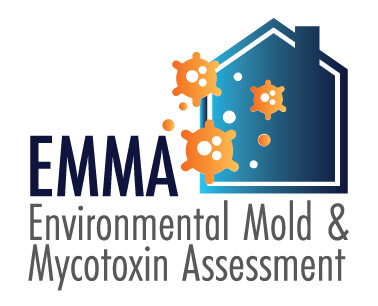How Mycotoxin testing Services Can Guard Your Products
How Mycotoxin testing Services Can Guard Your Products
Blog Article
How Mycotoxin Screening Assists Stop Contamination and Safeguard Food Materials

Mycotoxin testing is an important method in the food market, serving as a frontline defense versus contamination by harmful toxins generated by molds. With the application of sophisticated techniques like High-Performance Liquid Chromatography (HPLC) and Liquid Chromatography-Mass Spectrometry (LC-MS), food producers can precisely find and quantify mycotoxin levels in farming products.
Understanding Mycotoxins
Recognizing mycotoxins starts with identifying that they are toxic second metabolites produced by certain molds, which can pollute agricultural items. These metabolites are not vital for the development or reproduction of the fungis however can have extreme effects for animal and human health and wellness. Mycotoxins are commonly discovered in staple plants such as corn, wheat, barley, and nuts, where they can multiply under certain conditions of moisture and temperature level.
There are several types of mycotoxins, each created by various fungal types. Fusarium species create fumonisins and trichothecenes, both of which are associated with various severe and chronic health concerns.

Threats of Mycotoxin Contamination
The risks of mycotoxin contamination are complex, presenting substantial dangers to both food safety and public wellness. Mycotoxins, harmful substances produced by specific kinds of fungi, can infect a broad range of farming items including cereals, nuts, spices, dried fruits, and coffee.
Financial impacts are one more major problem. Infected crops can lead to significant economic losses for farmers and food producers because of decreased returns and the requirement for costly decontamination steps. Worldwide trade can be dramatically hindered as countries apply strict mycotoxin guidelines to secure their populations, leading to rejected deliveries and stretched trade relationships.
Ecological elements such as environment adjustment worsen the threat of mycotoxin contamination. Variants in temperature and moisture can produce desirable conditions for fungal development, boosting the probability of contamination events. Therefore, understanding and mitigating these dangers are crucial for making certain the security and honesty of worldwide food products.
Methods of Mycotoxin Testing
Accurately determining mycotoxin contamination in agricultural products is vital for safeguarding public health and maintaining food security criteria. Various methods are employed to spot and measure mycotoxins, each offering certain advantages and restrictions.
High-Performance Liquid Chromatography (HPLC) is a commonly made use of technique due to its high level of sensitivity and precision. It includes dividing mycotoxins from various other substances in a sample, enabling exact quantification. Liquid Chromatography-Mass Spectrometry (LC-MS) incorporates liquid chromatography with mass spectrometry to provide in-depth molecular info, making it especially useful for identifying several mycotoxins simultaneously.

Gas Chromatography-Mass Spectrometry (GC-MS) and Thin-Layer Chromatography (TLC) are likewise employed, each with one-of-a-kind applications. GC-MS works for volatile mycotoxins, while tender loving care offers a simpler, cost-efficient alternative for initial screening.
Benefits of Regular Testing
Normal screening for mycotoxins in farming products provides many benefits, significantly contributing to public wellness dig this and food security. By recognizing contamination early, routine screening assists protect against the distribution of hazardous foods, consequently reducing the danger of mycotoxin-related health problems among consumers. This positive technique not just safeguards human health but likewise improves the total quality of food products.
Different nations and areas have actually established rigorous limitations for mycotoxin degrees in food and feed. Sticking to these restrictions via regular screening makes sure that providers and manufacturers meet lawful requirements, thereby preventing fines and profession obstacles.
In addition, regular mycotoxin screening can bring about considerable economic advantages. Early detection of contamination permits timely treatment, minimizing potential losses from widespread contamination. Executing regular testing methods can likewise lessen recall costs and relevant obligations, which can be financially devastating.
Furthermore, regular screening offers valuable information that can inform better farming methods and storage conditions. By comprehending patterns of contamination, manufacturers can take on safety nets, therefore adding and lowering future risks to the sustainability of the food supply chain.
Executing Testing Protocols
Implementing effective mycotoxin screening methods is crucial for guaranteeing the safety and security and high quality of agricultural products. Establishing a robust testing structure entails several vital actions, starting with the recognition of potential contamination points within the production and supply chain. This includes pre-harvest, post-harvest, storage, and distribution stages. Each phase should be scrutinized to pinpoint where mycotoxin contamination learn this here now is probably to occur.
As soon as important control factors are determined, selecting ideal testing approaches is essential. Common strategies consist of enzyme-linked immunosorbent assay (ELISA), high-performance fluid chromatography (HPLC), and mass spectrometry (MS) Each approach has its staminas and weaknesses; therefore, choosing the correct one depends on the certain mycotoxin being evaluated, the required sensitivity, and available resources.

Last but not least, integrating the screening procedures right into an extensive food safety administration system is recommended. This improves traceability and makes it possible for speedy restorative actions when contamination is found, thereby protecting the stability of the food supply chain.
Final Thought
Mycotoxin testing is necessary in preventing contamination and securing food materials by enabling very early detection of harmful contaminants generated by molds in agricultural products. Regular screening boosts brand online reputation, financial stability, and depend on in food safety by minimizing contamination-related losses and preserving high requirements in food manufacturing.
Mycotoxin screening is a vital method in the food sector, serving as a frontline defense versus contamination by damaging contaminants produced by mold and mildews. An integrated strategy including agricultural practices, storage space management, and normal screening can reduce the dangers associated with mycotoxin contamination, making certain food safety and security and public health and wellness.
The risks of mycotoxin contamination are diverse, positioning substantial risks to both food security and public health and wellness.Routine testing for mycotoxins in farming items provides countless advantages, dramatically adding to public wellness and food safety and security.Mycotoxin screening is crucial in protecting against contamination and securing food supplies by enabling Full Report very early detection of harmful contaminants generated by molds in farming items.
Report this page